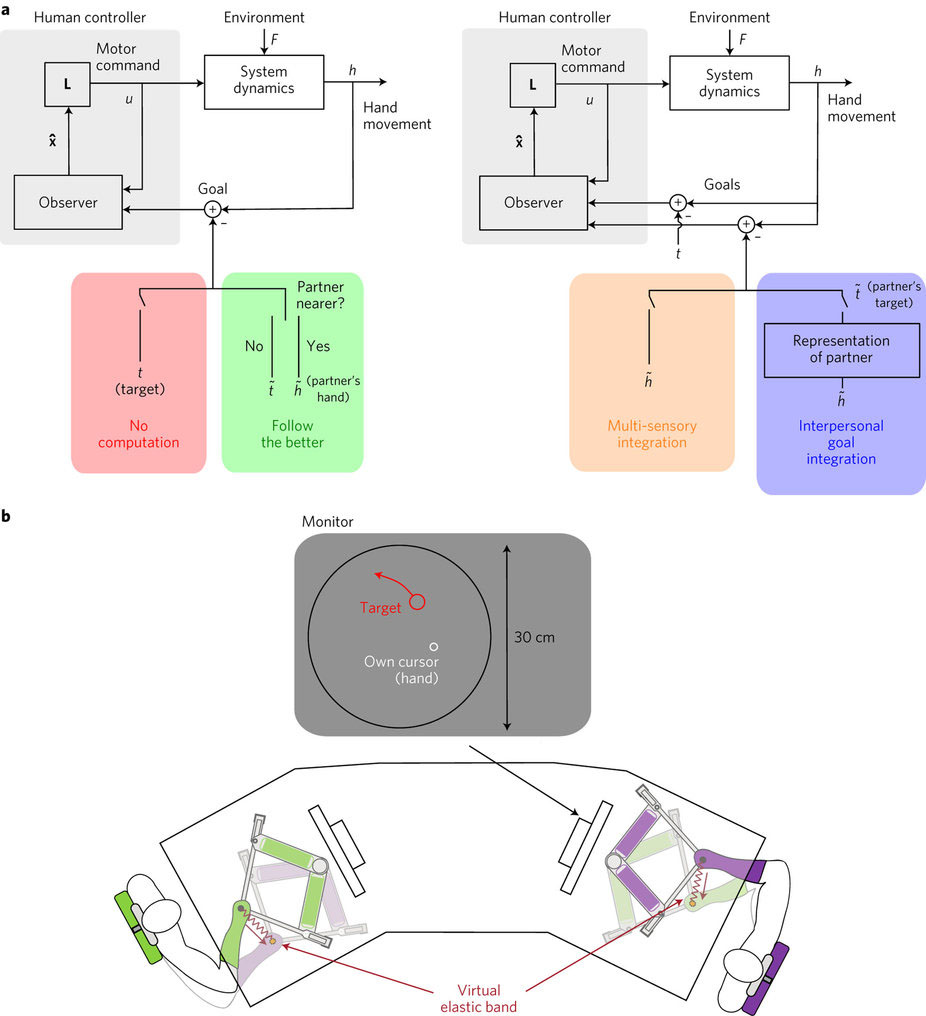Research Abstract
身体的相互作用をするパートナーは相手の運動の目的を推定してその運動を促す
Physically interacting individuals estimate the partner’s goal to enhance their movements
2017年3月6日 Nature Human Behaviour 1 : 54 doi: 10.1038/s41562-017-0054

初めて立とうする子を導く親の手助けから、セラピストによる患者の補助まで、触覚を介した相互作用が可能にする身体的補助は、運動能力を高めるための基本的な方法になっている。しかしながら、触覚を介した相互作用をしているときにパートナー間でどのような運動情報がやりとりされているのか、またその情報が他者との協調や補助にどのように利用されているかは不明である。本論文では、接触と固有受容がもたらす触覚情報によって、相互作用する人どうしが互いの運動の目的を推定し、その情報を用いて自身の運動能力を高めるというモデルを提案する。我々は経験的な身体相互作用課題を用いて、このモデルが文献に報告された既存の相互作用モデルよりもヒトの行動をうまく説明できることを示す。さらに、我々のモデルを組み込んだロボットのパートナーを使っても、ヒトのパートナーの場合と同じように運動能力の向上や学習がみられることを確認した。以上の結果は、ヒトのように補助を行う協働ロボットの有用性を約束し、運動の目的について情報を交換することが身体的補助の鍵であることを示唆する。
Corresponding Authors
From a parent helping to guide their child during their first steps, to a therapist supporting a patient, physical assistance enabled by haptic interaction is a fundamental modus for improving motor abilities. However, what movement information is exchanged between partners during haptic interaction, and how this information is used to coordinate and assist others, remains unclear. Here, we propose a model in which haptic information, provided by touch and proprioception, enables interacting individuals to estimate the partner’s movement goal and use it to improve their own motor performance. We use an empirical physical interaction task to show that our model can explain human behaviours better than existing models of interaction in literature. Furthermore, we experimentally verify our model by embodying it in a robot partner and checking that it induces the same improvements in motor performance and learning in a human individual as interacting with a human partner. These results promise collaborative robots that provide human-like assistance, and suggest that movement goal exchange is the key to physical assistance.

